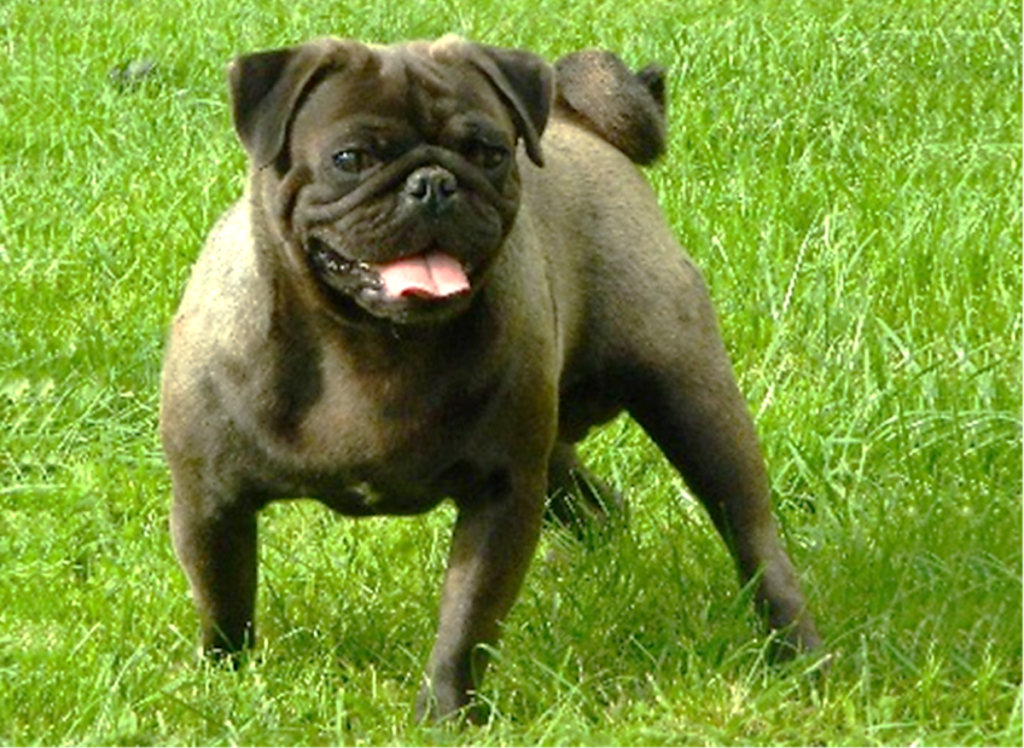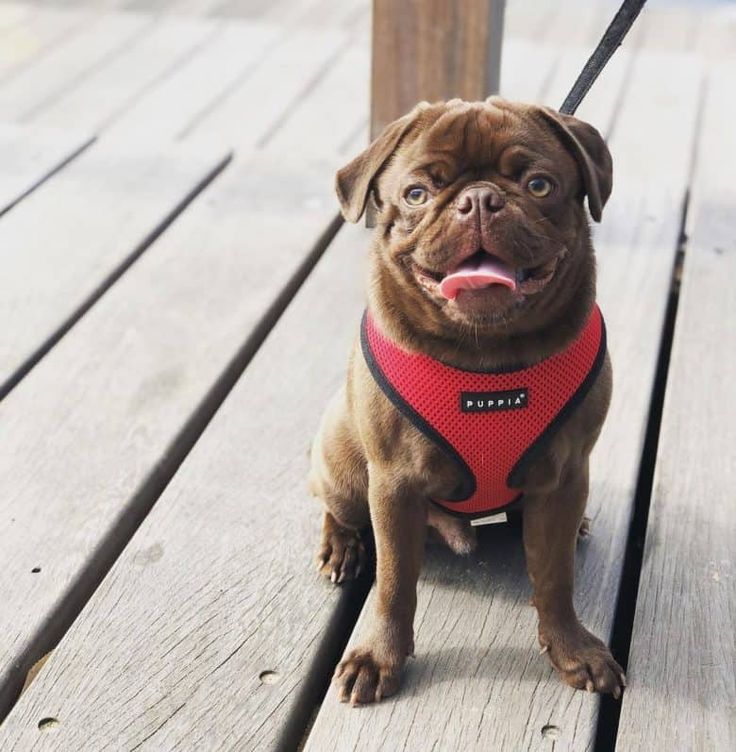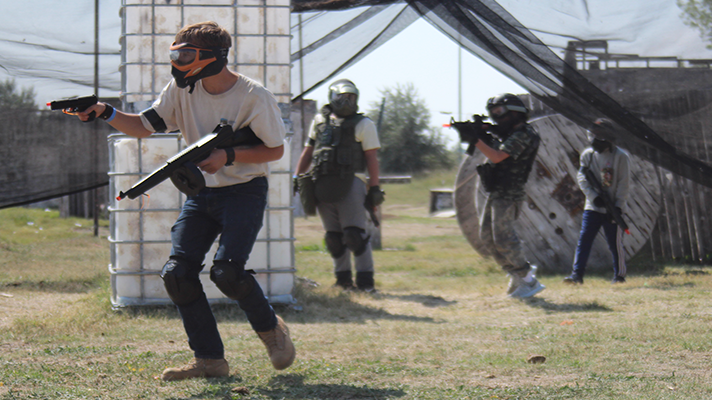The Brown Pug: A Complete Guide to this Adorable and Unique Dog Breed
brown pug one of the most loved and iconic dog breeds worldwide, and the brown pug in particular stands out with its distinctive color and charming personality. If you’re looking for an engaging, expert-level guide on everything related to brown pugs, you’ve come to the right place. Whether you’re a dog lover, owner, or potential pug parent, this comprehensive article covers the breed’s history, care, health, and fun facts. Let’s dive into the world of these charming brown pugs!
A Brief History of Pugs

Pugs are an ancient breed, with a lineage that dates back to 400 BC in China. These dogs were bred to be companions for Chinese emperors, and their unique appearance made them a favorite among royalty. Their flat-faced, wrinkled appearance, compact size, and playful personality made them a symbol of aristocracy and wealth. Pugs were often treated as if they were royalty themselves, living in luxurious palaces and being guarded by soldiers.
The Royal Connection
Brown pugs, like all pugs, have a direct connection to their royal ancestry. The breed spread across Asia and eventually made its way to Europe, where they became popular among European nobility. The Dutch brought pugs to the Netherlands in the 16th century, and they were famously the favorite breed of William of Orange, who even credited his pug for saving his life by alerting him to an attack.
The Evolution of Pug Colors
While the pug’s fawn color is the most recognized, brown or chocolate-colored pugs are growing in popularity. Brown pugs are often the result of specific breeding to achieve their unique coat color. Their rich brown coats add another layer of charm and uniqueness to an already fascinating breed, giving them a distinct place in the world of dog lovers.
What Makes a Brown Pug Unique?
Pugs are known for their loving, charming, and occasionally mischievous personalities, but brown pugs stand out in particular because of their beautiful coat. Their brown fur, which can vary from a light chocolate hue to a deep, rich mahogany, gives them an even more distinctive look that sets them apart from the more common fawn and black pugs.
Coat and Color Variations
Brown pugs aren’t just about their coat color. Their fur can come in different textures as well, ranging from smooth and sleek to a bit coarser depending on the dog’s genetics. Some brown pugs may also have a mix of black around their muzzle or ears, adding depth and variety to their appearance. The chocolate coloring is not yet fully recognized by all kennel clubs, but it’s becoming more widely accepted in many regions.
Temperament and Personality
Like all pugs, are affectionate and social dogs. They’re known for their loyalty to their families and can be quite attached to their owners. Brown pugs, in particular, may exhibit slightly different behaviors depending on their breeding background, but their core characteristics—playfulness, charm, and friendliness—remain the same.
Brown pugs also have an innate ability to connect with their owners. Whether it’s cuddling on the couch, following you around the house, or entertaining you with their funny antics, these dogs are devoted companions.
Unique Health Considerations
While brown pugs share many health concerns with other pugs, there are a few unique factors to consider. Their coat color, while beautiful, may require specific care, such as regular grooming and sun protection, as darker coats can absorb more heat. Ensuring that your brown pug stays cool and well-groomed can help them live a happy, healthy life.
Physical Characteristics of a Brown Pug
The physical traits of a are a large part of their appeal. Pugs, in general, are known for their compact, sturdy build, large expressive eyes, and wrinkled faces. Brown pugs share these iconic features with their fawn and black counterparts, but their coat color adds a special flair.
Size and Build
Pugs are a toy breed, usually weighing between 14 to 18 pounds when fully grown. They have a square, muscular body and a short, curled tail that adds to their characteristic appearance. Despite their small size, pugs are quite sturdy and muscular, making them surprisingly tough for a toy breed.
Their flat faces and broad heads give them a unique appearance, which is part of what makes them so recognizable and beloved. The wrinkles on their forehead, often described as “deep thought lines,” make their faces highly expressive.
Facial Features and Wrinkles
The wrinkles on a brown pug’s face are more than just adorable—they’re a defining characteristic of the breed. These wrinkles, particularly those on the forehead and around the eyes, often need special attention to keep clean, as they can trap moisture and dirt. Keeping these areas clean and dry helps to avoid infections.
Pugs also have prominent, round eyes that give them a soft, expressive look. Brown pugs, in particular, may have slightly darker eye colors that complement their coat. Their eyes are prone to tearing, so regular cleaning is essential to maintaining their eye health.
Coat and Grooming Needs
Brown pugs have a short, dense coat that is relatively easy to care for. However, like all pugs, they do shed, and regular brushing can help to minimize loose hair around the house. Despite their short coats, can still require regular grooming to keep their skin healthy and to manage shedding.
Because pugs are prone to overheating, especially those with darker coats like brown pugs, it’s important to keep them cool during hot weather. A good grooming routine, combined with keeping them indoors during extreme heat, can help prevent heatstroke.
The Personality of a Brown Pug: Playful and Loving
Brown pugs, like their other-colored cousins, are known for their wonderful personalities. They are playful, loving, and often quite mischievous, making them a joy to have as companions. Their unique combination of traits makes them a favorite among families, singles, and seniors alike.
Social Butterflies
Pugs are social dogs, and are no different. They love being around people and are happiest when they are part of the family. They thrive on attention and can become very attached to their owners, often following them from room to room. Brown pugs, in particular, tend to bond closely with their humans and can be quite affectionate.
get along well with other pets, too. Whether you have other dogs, cats, or small animals, your brown pug will likely make friends with everyone. They are rarely aggressive and are usually happy to play with or simply hang out with their fellow pets.
The Clownish Side
One of the reasons pugs are so beloved is their clownish nature. They are natural entertainers, and brown pugs are no exception. They often engage in silly antics, like running in circles, making funny noises, or playing with their toys in ways that will keep you laughing. Their goofy behavior, combined with their affectionate nature, makes them a joy to be around.
Brown pugs are also known for their “pug zoomies”—a burst of energy where they run around the house or yard at full speed, often with a look of sheer delight on their faces. While these zoomies don’t last long, they are a hilarious and endearing part of owning a brown pug.
Loyal and Loving Companions
Despite their playful, sometimes clownish behavior, brown pugs are deeply loyal to their families. They crave companionship and will often curl up next to you for a nap or sit on your lap while you work or relax. are perfect lap dogs, content to stay by your side and offer comfort and affection.
Their loyalty also makes them good watchdogs. While they aren’t aggressive, brown pugs will alert you if they hear strange noises or see something unusual. Their small size may not make them intimidating, but their devotion to their owners is undeniable.
Training a Brown Pug: Patience and Persistence
Pugs are smart dogs, but they can also be a little stubborn, which can make training a bit of a challenge. However, with patience, consistency, and positive reinforcement, your brown pug can learn basic commands and even a few fun tricks.
The Importance of Early Training
Early training is crucial for brown pugs, just like it is for any dog breed. Teaching your pug basic commands like “sit,” “stay,” and “come” helps to establish good behavior early on and sets the tone for future training. Pugs are generally eager to please, but they also have a stubborn streak that can sometimes make them resistant to commands if they don’t see the point.
Using positive reinforcement techniques, such as treats and praise, is the most effective way to train a brown pug. They respond well to rewards, and training sessions should be kept short and fun to maintain their interest.
Socialization
Socializing your brown pug is equally important as training. Pugs are naturally social dogs, but introducing them to different people, places, and other animals early on will help them develop into well-rounded pets. that are well-socialized are more confident and less likely to become anxious in new situations.
Take your brown pug to parks, pet-friendly stores, and other environments where they can meet new people and dogs. This exposure will help them feel more comfortable in a variety of settings and make them more adaptable companions.
Overcoming Stubbornness
Pugs can be stubborn, and brown pugs are no exception. This stubbornness is often part of their charm, but it can make training more difficult if not handled correctly. The key is to be persistent and patient. If your resists a command, avoid getting frustrated. Instead, try a different approach or take a break and come back to it later.
Consistency is also important. Stick to a regular training schedule, and use the same commands and techniques every time. Over time, your brown pug will learn to associate specific behaviors with rewards, and training will become easier.
Health and Wellness: Caring for Your Brown Pug
Like all dogs, brown pugs require proper care and attention to ensure they live a long, healthy life. While pugs are generally healthy dogs, they do have some breed-specific health issues that owners should be aware of.
Common Health Issues in Brown Pugs
Pugs, including brown pugs, are prone to certain health problems due to their physical structure. Their flat faces, or brachycephalic shape, can lead to breathing issues, particularly in hot weather or during vigorous exercise. It’s essential to monitor your breathing and ensure they don’t overexert themselves.
Another common issue in pugs is obesity. Pugs love to eat, and if their diet isn’t carefully managed, they can quickly gain weight. Obesity can exacerbate other health issues, such as joint problems and respiratory issues, so it’s crucial to keep your brown pug at a healthy weight through proper diet and exercise.
Keeping Your Brown Pug Fit
Exercise is important for all dogs, and brown pugs are no different. While they don’t need as much exercise as some larger or more active breeds, regular walks and playtime are necessary to keep them healthy and happy. enjoy short walks, games of fetch, or even a playful romp around the yard. However, due to their brachycephalic nature, be mindful of not overexerting them, especially in hot weather.
Mental stimulation is equally important. Pugs are intelligent dogs, and they enjoy activities that challenge their minds, such as puzzle toys or learning new tricks. Keeping your brown pug mentally engaged helps to prevent boredom and destructive behavior.
Grooming and Maintenance
Brown pugs have relatively low grooming needs, but they do require regular brushing to keep their coats healthy and to manage shedding. Brushing your brown pug’s coat at least once a week will help to remove loose hair and keep their skin in good condition. It’s also a great bonding activity for you and your pug!
Additionally, because pugs are prone to dental problems, regular brushing of their teeth is essential. Pug owners should aim to brush their dog’s teeth several times a week to prevent plaque buildup and gum disease. Regular check-ups with a veterinarian are also important to monitor your brown pug’s overall health.
Feeding Your Brown Pug: Nutrition and Diet Tips
Feeding a brown pug a balanced and nutritious diet is key to keeping them healthy. Pugs, in general, are prone to weight gain, so it’s essential to monitor their food intake and ensure they’re getting the right nutrients without overfeeding.
Portion Control
One of the most important aspects of feeding a brown pug is portion control. Pugs have a tendency to overeat, and if their diet isn’t carefully managed, they can quickly become overweight. Feeding your the right amount of food based on their age, weight, and activity level is essential to maintaining a healthy weight.
Consult with your vet to determine the appropriate portion size for your pug. In general, feeding your brown pug two meals a day—morning and evening—is a good routine. Be sure to measure out their food and avoid free-feeding, where food is left out all day for them to graze on.
Choosing the Right Food
The quality of the food you feed your is just as important as the quantity. Look for high-quality dog food that is specifically formulated for small breeds. The food should be rich in protein and contain a balance of healthy fats, carbohydrates, vitamins, and minerals.
Some owners prefer to feed their pugs a raw or home-cooked diet, but if you choose this route, it’s important to consult with a veterinarian or canine nutritionist to ensure your pug is getting all the nutrients they need.
Treats and Snacks
While treats are an excellent way to reward your brown pug, it’s important not to go overboard. Pugs are highly food-motivated, and too many treats can quickly lead to weight gain. Opt for healthy, low-calorie treats, and limit their intake to training sessions or special occasions.
You can also use small portions of their regular food as treats during training to avoid adding extra calories to their diet. Remember, moderation is key!
Brown Pug Puppies: What to Expect
Bringing a brown pug puppy into your home is an exciting and joyful experience. These tiny, wrinkly puppies are full of energy and curiosity, and watching them grow into their personality is a rewarding journey.
Finding a Reputable Breeder
If you’re interested in adding a brown pug puppy to your family, it’s essential to find a reputable breeder. A good breeder will prioritize the health and well-being of their dogs and will be happy to provide you with information about the puppy’s health, lineage, and care requirements.
When looking for a breeder, ask about the puppy’s parents, any health testing that has been done, and what kind of socialization the puppy has received. A responsible breeder will also offer support after you take your puppy home, helping you navigate any questions or concerns you may have.
Puppy Care and Development
Caring for a brown pug puppy requires time, attention, and patience. Pug puppies are curious and energetic, and they need plenty of stimulation to keep them engaged. However, they also tire easily, so be prepared for lots of naps between play sessions!
Puppy-proofing your home is essential, as pug puppies will try to explore everything with their mouths. Keep small objects, cords, and other potential hazards out of reach to ensure your puppy’s safety.
Pug puppies also need regular vet check-ups to ensure they’re growing properly and staying healthy. Vaccinations, deworming, and flea prevention are all part of routine puppy care, and your vet will provide a schedule for these treatments.
Training Your Puppy
Training your brown pug puppy should start as early as possible. Begin with basic commands like “sit” and “stay,” and focus on positive reinforcement techniques. Pug puppies can be stubborn, so patience and consistency are key.
Socializing your puppy is also important. Exposing them to different people, animals, and environments early on will help them grow into a well-adjusted adult dog. Puppy socialization classes are a great way to help your brown pug puppy build confidence and learn how to interact with other dogs.
The Lifespan of a Brown Pug: What to Expect
Pugs, including, typically have a lifespan of 12 to 15 years, though some can live even longer with proper care. Ensuring your brown pug lives a long, healthy life requires regular vet visits, a balanced diet, exercise, and plenty of love and attention.
Senior Brown Pugs
As your brown pug enters their senior years, they may slow down a bit and develop some age-related health issues. Common problems in older pugs include arthritis, vision or hearing loss, and respiratory issues. However, with proper care, senior pugs can continue to enjoy a good quality of life.
Regular vet visits become even more important as your pug ages. Your vet can help you manage any health issues that arise and provide guidance on maintaining your brown pug’s health and comfort in their senior years.
Keeping Your Brown Pug Healthy
The key to keeping your brown pug healthy throughout their life is preventative care. Regular vet check-ups, a balanced diet, proper exercise, and good grooming practices will help ensure your pug lives a long, happy life.
Staying on top of vaccinations, dental care, and weight management is also essential. By being proactive about your brown pug’s health, you can catch potential issues early and ensure they get the treatment they need.
Conclusion
Brown pugs are a unique and lovable breed that bring joy and companionship to their owners. With their playful personalities, adorable wrinkled faces, and distinctive brown coats, they are truly one-of-a-kind. Whether you’re considering adding a brown pug to your family or you’re already the proud owner of one, this guide offers everything you need to know to keep your happy, healthy, and full of life. By providing the right care, attention, and love, your will be a loyal companion for many years to come.







Post Comment